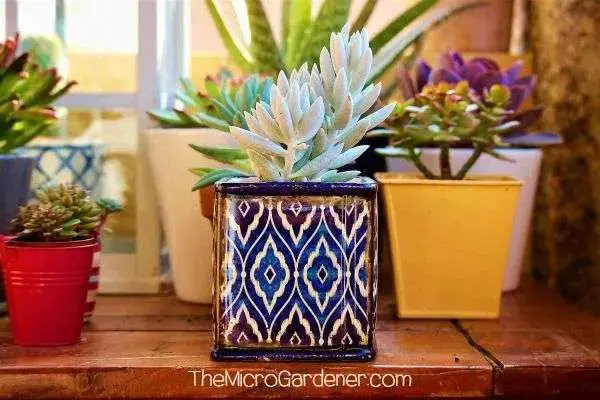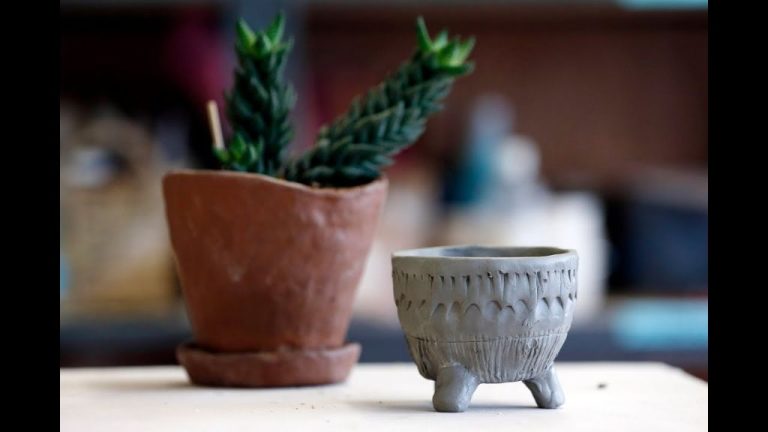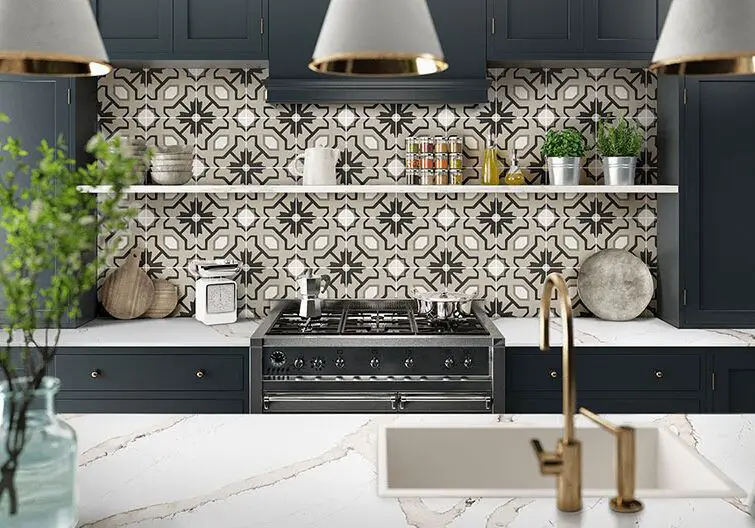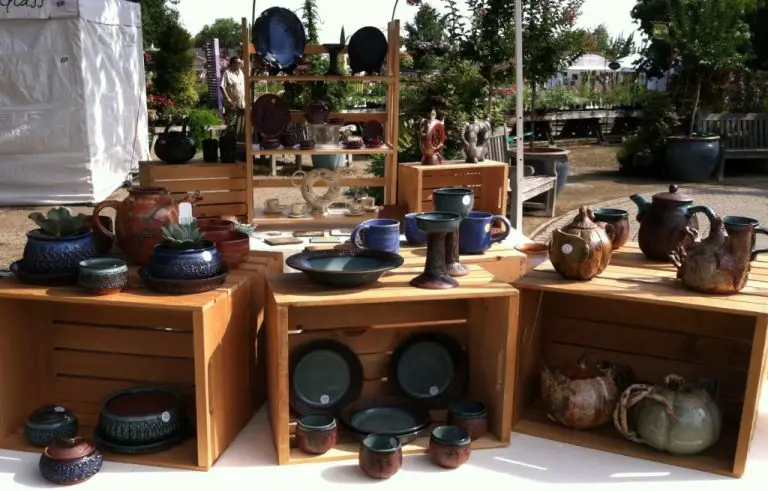Do Plants Do Better In Plastic Or Ceramic Pots?
Choosing the right type of pot for growing plants is an important decision for any gardener. The pot serves as the home for plant roots and can directly impact how well plants grow. Plastic and ceramic pots are two of the most common options, each with their own sets of pros and cons. Understanding the key differences between these pot types can help gardeners make informed choices to get the best results.
In this article, we’ll compare plastic and ceramic pots across a variety of factors that affect plant growth and health. We’ll look at how the materials impact watering, drainage, aeration, temperature, light exposure and more. Case studies will demonstrate real world examples of how plants thrive in plastic vs ceramic pots. By the end, you’ll have the knowledge to decide which option may work best for your specific needs and plants.
Plastic Pots
Plastic pots are one of the most commonly used containers for plants. They have several advantages that make them popular for both home gardeners and commercial plant growers. Some key benefits of plastic pots include:
Plastic pots are lightweight and portable. Their low weight makes them easier to move around compared to heavy materials like clay or concrete. Their portability allows for flexible arrangement and spacing of plants.
They provide good drainage and aeration for roots due to the porous nature of plastic. The material allows excess water to seep out while still providing air circulation around the roots. Proper drainage prevents issues like root rot.

Plastic pots come in a wide variety of shapes, sizes, and colors. There are options optimized for specific types of plants. The variety allows gardeners to choose pots suited to their needs.
They are relatively inexpensive compared to other pot materials. The low cost makes plastic pots accessible and disposable. You can use new sterile pots each year to prevent disease transmission.
However, plastic pots also have some downsides. They degrade over time when exposed to sunlight and weather. Pots may become brittle and crack after a few years of use. Some types of plastic can leach potentially toxic chemicals into the soil. Overall plastic pots provide a good balance of affordability, practicality, and plant health when used properly.
Ceramic Pots
Ceramic pots are made from natural clay that is shaped and then fired at high temperatures. This makes the clay hard and durable. Ceramic pots come in a variety of shapes, sizes, colors and designs. They are a popular choice for indoor and outdoor planting containers.
Ceramic pots have some advantages over other pot materials. The clay is porous, which allows air and moisture to penetrate to the plant’s roots. This can help prevent overwatering. Ceramic also helps buffer soil temperature changes more than plastic pots. The variety of colors, shapes and designs allow you to easily match your home’s decor (https://www.raaquu.com/blogs/articles-and-announcements/advantages-disadvantages-of-using-ceramic-planter-pots).
However, ceramic pots also have some drawbacks. Their porosity means water evaporates through the sides more quickly than other materials. Plants in ceramic pots may need more frequent watering. The clay is also brittle if subject to sharp impacts or drops. Ceramic pots tend to be more expensive than plastic pots as well.
Common types of ceramic pots include terracotta, stoneware, porcelain and glazed. Terracotta is the most porous. Glazed ceramic is non-porous and helps retain moisture better. The glaze also makes cleaning easier. Porcelain pots have very smooth finishes and high durability.
Factors that Influence Plant Growth
There are several key factors that impact how well plants grow in pots, including soil, drainage, evaporation, temperature, light exposure, humidity, and nutrition.
Soil is a major consideration. The soil needs to retain some moisture but also drain well and provide aeration for the roots. A soil mixture optimized for container plants, with ingredients like peat moss or coconut coir is ideal. Having the right balance of nutrients in the soil, or providing them through regular fertilizing, is also important for healthy growth. Proper drainage holes in the bottom of the pots allow excess water to flow out.
Evaporation rates can differ between plastic and ceramic pots. Plastic pots retain moisture better than unglazed clay pots that allow faster evaporation from the sides. However, glazed ceramic and plastic pots have more similar moisture retention properties. The size of the pot also impacts moisture needs, with larger pots requiring less frequent watering.[Environmental factors affecting plant growth](https://extension.oregonstate.edu/gardening/techniques/environmental-factors-affecting-plant-growth)
Temperature is a key consideration for plant growth. Most plants grow best within an optimal temperature range. Ceramic and plastic pots conduct and retain heat differently, which can impact the plant roots. Direct sun exposure also influences the temperature. Providing shade in very hot conditions or extra warmth for cold-sensitive plants can improve growth.[The Effect Of Container Size](https://swfrec.ifas.ufl.edu/docs/pdf/veg-hort/transplant/trans_cs1.pdf)
Watering Needs
The type of pot material affects how quickly soil dries out, which directly impacts the frequency of watering required. Plastic pots retain more moisture and take longer for the soil to dry out compared to unglazed clay or ceramic pots. As noted in one source, “Unglazed clay pots dry out quicker than plastic or glazed pots” (https://soiltesting.cahnr.uconn.edu/watering-houseplants). This is because clay is porous and allows evaporation through the sides of the pot. In contrast, plastic is non-porous and prevents evaporation, keeping the soil moist for longer.
The same source recommends checking the soil moisture daily in a clay pot and watering once the top inch becomes dry. For plastic pots, it may take 2-3 days before the top inch of soil dries out sufficiently to require watering. The faster drying time with ceramic pots means more frequent watering is needed to prevent the soil from becoming overly dry. However, this provides an advantage in that plants are less prone to issues like root rot due to overwatering.
Aeration and Root Growth
Aeration refers to the flow of air in and around the soil. It is crucial for healthy root growth. Plastic and ceramic pots differ in how well they allow air to penetrate the soil.
Plastic pots are known to restrict air flow. The smooth, nonporous material forms a barrier that prevents oxygen from entering the container medium. This can lead to compaction and poor drainage over time as water molecules get trapped. As a result, roots end up lacking oxygen and can become stunted or deformed (Gallegos, 2020).
In contrast, clay and terracotta pots allow more air to pass through tiny pores in the material. The terra-cotta clay is porous and permeable, facilitating greater gas exchange. With improved aeration, the roots receive more oxygen and can grow freely in a healthy manner.
Therefore, ceramic pots tend to provide better aeration critical for robust root systems. The extra airflow prevents compaction and allows for stronger, more expansive root networks.
Temperature Effects
The temperature of the soil can have a significant impact on plant growth and development. Plastic and ceramic pots retain heat differently, which can affect root zone temperatures.
According to a study published in Scientia Horticulturae, black plastic containers can increase soil temperatures by 4-6°C compared to other container types (source). The color of the pot plays a key role, as darker colors absorb more heat. Plastic is also a poor conductor, trapping heat inside the container.
In contrast, ceramic pots conduct heat more readily and radiate heat away from the root zone. One study found soil temperatures were 3-5°C lower in terra cotta pots compared to black plastic (source). Terracotta and clay pots provide insulation from extreme temperature swings.
Higher temperatures in plastic pots can accelerate plant growth initially but may cause heat stress on roots long-term. Lower temperatures in ceramic keep roots cooler and prevent overheating. When selecting a pot, it’s important to consider the temperature retention properties and how that could affect your specific plants.
Light Exposure
The color and opacity of pots can impact how much light plants absorb. Darker colored pots like black tend to absorb more light, while lighter colored pots allow more light to pass through. Opaque plastic pots block light from reaching the sides and bottom of the root ball, while translucent ceramic pots allow some light penetration. According to Source 1, green light can penetrate leaf layers more effectively than red or blue light. However, as noted by Source 2, red light impacts flowering and blooming phases. The opacity and color of the pot influences how much green vs red light reaches plant leaves and roots.
Case Studies
Research comparing plant growth in plastic vs ceramic pots is limited, but some studies provide useful insights. A 2021 study published in the Journal of Environmental Horticulture examined growth of Chinese hibiscus plants in plastic and ceramic pots. The researchers found that while plant height was unaffected, plants grown in ceramic pots developed more shoots and leaves compared to plastic pots. They hypothesized the extra aeration provided by ceramic was beneficial for root and shoot growth. However, a 2015 study in Scientia Horticulturae found contrasting results – petunias grown in plastic pots developed more shoots and flowers compared to ceramic. Factors like plant variety, soil moisture, and ambient temperature likely influence the effects of pot material as well.
Overall, studies suggest that the physical properties of the pot, especially related to aeration, water retention, and insulation, interact with other growing conditions to influence plant growth outcomes in plastic vs ceramic pots. More research controlling for soil, watering, and environmental factors is needed to isolate the effects of pot material alone.
Conclusion
In conclusion, both plastic and ceramic pots have their advantages and disadvantages for growing plants. Plastic pots are generally cheaper, lighter weight, and more durable. They allow for flexibility in plant spacing and garden design. However, plastic can heat up in the sun, potentially damaging plant roots. Ceramic pots provide better insulation, protecting roots from temperature swings. Their porosity allows for air pruning of roots. But ceramic pots are heavier, more fragile, and prone to cracking in winter freezes or with large/top-heavy plants. They also wick away moisture faster than plastic.
When choosing between plastic or ceramic pots, consider the type of plant, climate, watering frequency, and budget. For indoor plants and tropicals that need constant moisture, plastic may be a better choice. For drought-tolerant and Mediterranean plants that appreciate excellent drainage, ceramic is ideal. Outdoor climates with large temperature swings favor ceramic for insulation. In the end, both plastic and ceramic can successfully grow healthy plants with proper care and conditions. Focus on finding the right balance of porosity, weight, insulation, and moisture retention for your specific needs.




